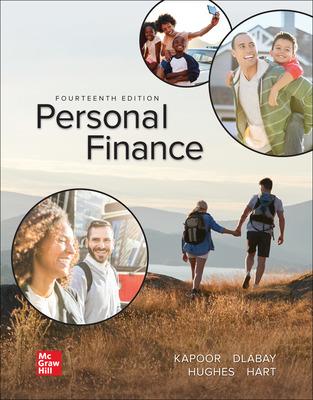
In year 1, Kinguin will earn $3.2 million before interest and taxes. The market expects these earnings to grow at a rate of 3% per year. The firm will make no net investments (i.e., capital expenditures will equal depreciation) or changes to net working capital. Assume that the corporate tax rate equals 25%. Right now, the firm has $10 million in risk-free debt. It plans to keep a constant ratio of debt to equity every year, so that on average the debt will also grow by 3% per year. Suppose the risk- free rate equals 5%, and the expected return on the market equals 11%. The asset beta for this industry is 1.11. a. If Kinguin were an all-equity (unlevered) firm, what would its market value be? b. Assuming the debt is fairly priced, what is the amount of interest Kinguin will pay next year? If Kinguin's debt is expected to grow by 3% per year, at what rate are its interest payments expected to grow? c. Even though Kinguin's debt is riskless (the firm will not default), the future growth of Kinguin's debt is uncertain, so the exact amount of the future interest payments is risky. Assuming the future interest payments have the same beta as Kinguin's assets, what is the present value of Kinguin's interest tax shield? d. Using the APV method, what is Kinguin's total market value, VL? What is the market value of Kinguin's equity? e. What is Kinguin's WACC? f. Using the WACC method, what is the expected return for Kinguin's equity? g. Assuming that the proceeds from any increases in debt are paid out to equity holders, what cash flows do the equity holders expect to receive in one year? At what rate are those cash flows expected to grow? Use that information plus your answer to part (f) to derive the market value of equity using the FCFE method. How does that compare to your answer in part (d)? In year 1, Kinguin will earn $3.2 million before interest and taxes. The market expects these earnings to grow at a rate of 3% per year. The firm will make no net investments (i.e., capital expenditures will equal depreciation) or changes to net working capital. Assume that the corporate tax rate equals 25%. Right now, the firm has $10 million in risk-free debt. It plans to keep a constant ratio of debt to equity every year, so that on average the debt will also grow by 3% per year. Suppose the risk- free rate equals 5%, and the expected return on the market equals 11%. The asset beta for this industry is 1.11. a. If Kinguin were an all-equity (unlevered) firm, what would its market value be? b. Assuming the debt is fairly priced, what is the amount of interest Kinguin will pay next year? If Kinguin's debt is expected to grow by 3% per year, at what rate are its interest payments expected to grow? c. Even though Kinguin's debt is riskless (the firm will not default), the future growth of Kinguin's debt is uncertain, so the exact amount of the future interest payments is risky. Assuming the future interest payments have the same beta as Kinguin's assets, what is the present value of Kinguin's interest tax shield? d. Using the APV method, what is Kinguin's total market value, VL? What is the market value of Kinguin's equity? e. What is Kinguin's WACC? f. Using the WACC method, what is the expected return for Kinguin's equity? g. Assuming that the proceeds from any increases in debt are paid out to equity holders, what cash flows do the equity holders expect to receive in one year? At what rate are those cash flows expected to grow? Use that information plus your answer to part (f) to derive the market value of equity using the FCFE method. How does that compare to your answer in part (d)







